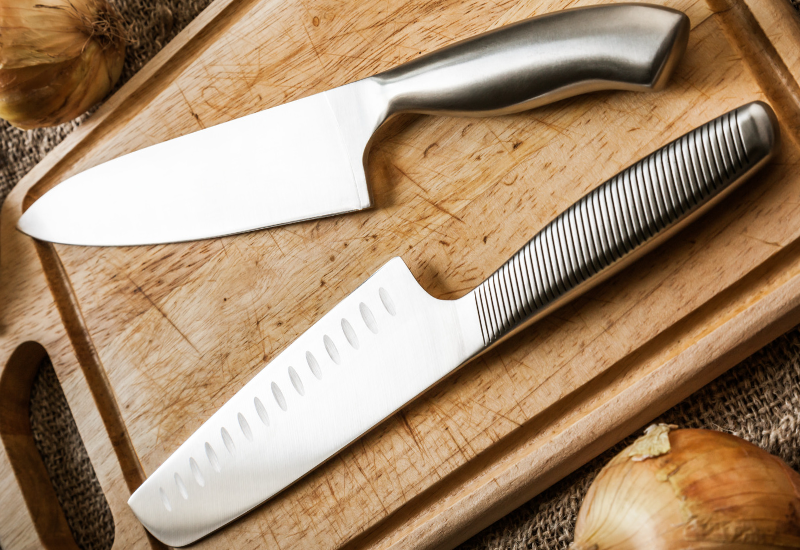Knife selection plays a crucial role in the world of cooking, be it in professional settings or at home. Two popular types of knives widely known for their distinct characteristics and craftsmanship are Japanese knives (Wahōchō) and Western knives (Yōhōchō). This article aims to delineate the differences between these two culinary icons.
Material and Manufacturing
Japanese knives, made of hard carbon steel, are renowned for their sharpness and edge retention. The forging process involves careful hammering and folding, creating a blade with intricate layers of steel. This produces a lightweight knife that allows precise and delicate cutting motions.
Conversely, Western knives are typically made from softer stainless steel. This gives them durability and resistance to rust and staining. They are heftier and provide robust support for a variety of heavy-duty cutting tasks.
Blade and Edge Design
Japanese knives often feature a single bevel blade, meaning they are sharpened on one side. This results in a razor-sharp edge, ideal for slicing through ingredients with precision. Additionally, these knives usually have a straighter edge, suitable for up-and-down chopping motions.
Western knives, on the other hand, have a double bevel blade, sharpened on both sides. This design makes them versatile and easy to handle for different cutting styles, including rocking cuts. Their curved edge design aids in the rocking motion commonly used in Western cooking.
Handle Design
The handle of a traditional Japanese knife is usually made of wood and is often cylindrical or D-shaped. This design is meant to provide comfort and control for precise slicing movements.
Western knives often feature a more ergonomic handle design that may include contours for fingers, providing a secure grip for various cutting tasks. Handles are usually made from materials like plastic, composites, or stainless steel.
Maintenance and Usage
Japanese knives require regular maintenance to prevent rust and retain their sharpness. They are best suited for tasks that need precision, such as sushi or sashimi preparation.
Western knives, due to their sturdier build and rust resistance, need less frequent sharpening and are more forgiving of rough handling. They are versatile tools, ideal for a wide range of cutting tasks in daily cooking.
Japanese and Western knives each have unique strengths. The choice between them comes down to personal preference and the specific culinary tasks at hand. Understanding the key differences can help one to make the best choice for their cooking style and needs.

